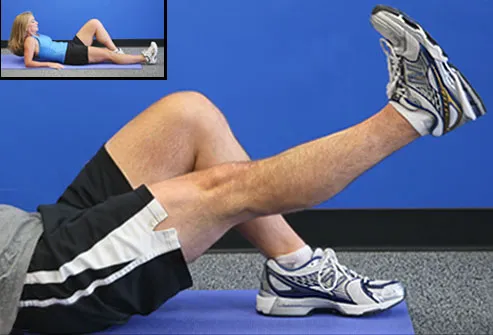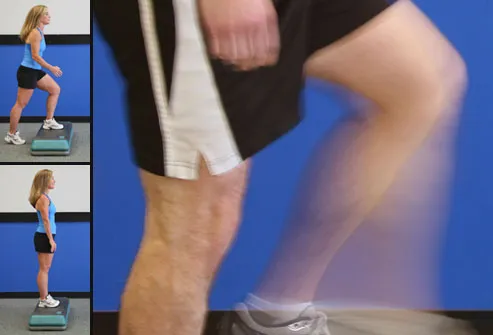Arthritis And Exercise Guidelines
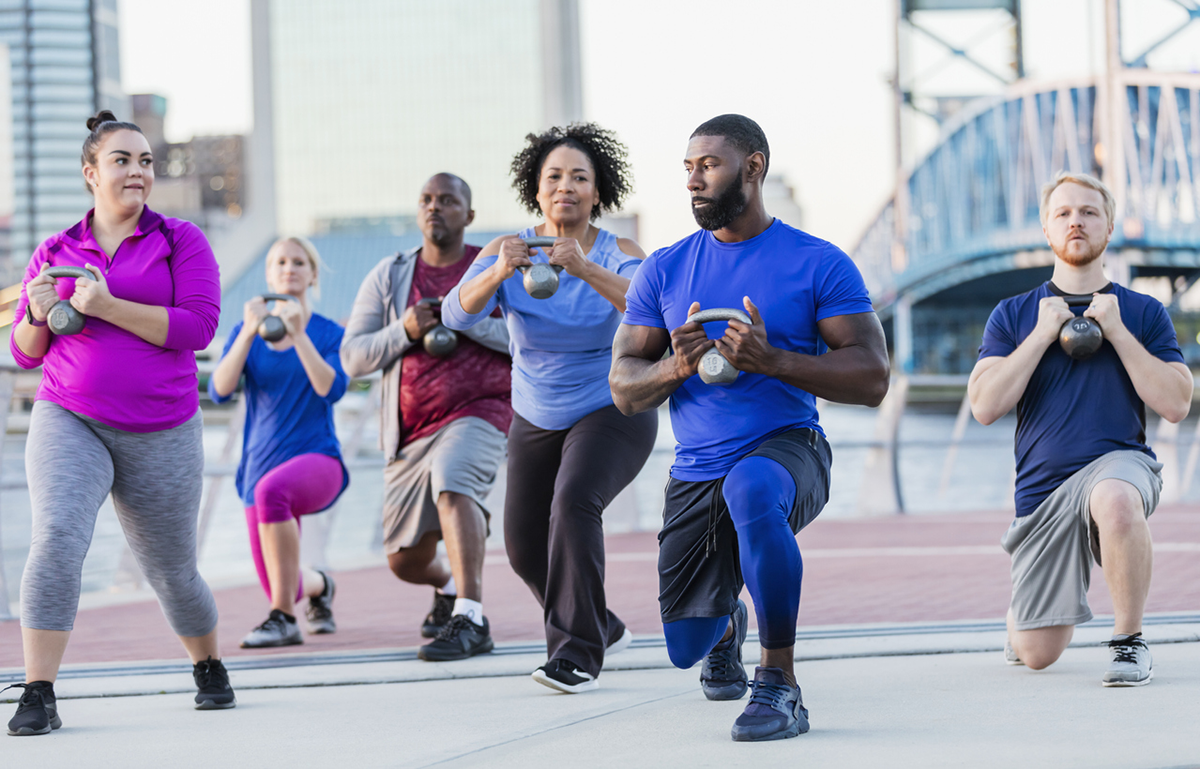
- Arthritis is a general term that refers to over 150 different conditions. The accurate term for this group of conditions is ‘musculoskeletal conditions’, as they affect the muscles, bones and joints.
- Arthritis and other musculoskeletal conditions affect the normal functioning of the joints, muscles, bones and surrounding structures. The way this happens will depend on the condition you have.
- Arthritis can cause pain, stiffness and often inflammation in one or more joints or muscles. Regular exercise can reduce some of the symptoms of arthritis, and improve your joint mobility and strength.
How do I exercise safely with arthritis?
Learn how you can safely exercise and enjoy the benefits of increased physical activity with these S.M.A.R.T. tips.
Contents
- Start low, go slow.
- Modify activity when arthritis symptoms increase, try to stay active.
- Activities should be “joint friendly.”
- Recognize safe places and ways to be active.
- Talk to a health professional or certified exercise specialist.
Around 27 million Americans have osteoarthritis (OA), a degenerative joint disease. Ongoing loss of
cartilage causes joint pain and reduced range of motion. This often leads to physical disability and reduced
quality of life.
See Your Doctor If You Experience Any Of The Following
- Pain that is sharp, stabbing, and constant.
- Pain that causes you to limp.
- Pain that lasts more than 2 hours after exercise or gets worse at night.
- Pain or swelling that does not get better with rest, medication, or hot or cold packs.
- Large increases in swelling or your joints feel “hot” or are red.
What Do I Do If I Have Pain During Or After Exercise?
- It’s normal to have some pain, stiffness, and swelling after starting a new physical activity program.
- It may take 6 to 8 weeks for your joints to get used to your new activity level, but sticking with your activity program will result in long-term pain relief.
Here are some tips to help you manage pain during and after physical activity so you can keep exercising:
- Until your pain improves, modify your physical activity program by exercising less frequently (fewer days per week) or for shorter periods of time (less time each session).
- Try a different type of exercise that puts less pressure on the joints—for example, switch from walking to water aerobics.
- Do proper warm-up and cool-down before and after exercise. You can find warm-up and cool-down exercises on the Arthritis Foundation’s Walk With Ease Exercise Videos webpage
- Exercise at a comfortable pace—you should be able to carry on a conversation while exercising.
- Make sure you have good fitting, comfortable shoes.
Aerobic Exercise Cautions When You Have Arthritis
- If you have been inactive for a long time, start with shorter
sessions (10 to 15 minutes). Add five minutes to each session,
increasing every two to four weeks. Over time, build up to
being active at least 30 minutes a day on most days of the week. - Expect some discomfort after your workouts. However, you
should not be in pain. If pain is greater two hours after exercise
than it was before, reduce the length and intensity of your next
session. - Exercise time is more import than intensity. If you
exercise at too high an intensity, you may not be able to exercise
very long. High-intensity exercise also increases your risk of
injury. - Avoid vigorous, highly repetitive activities. This is especially
true for people with unstable joints. - Avoid overuse and repetitive stress injuries by alternating types
of exercise over consecutive days. - Drink plenty of fluids before, during, and after exercise
Resistance Exercise Cautions
- Avoid holding your breath when lifting. This can cause large
changes in blood pressure. That change may increase the risk
of passing out or developing abnormal heart rhythms. This is
especially true if you also have high blood pressure. - Start with 10 to 15 repetitions. Build up to 15 to 20 repetitions
before you add another set
Other Types Of Exercise For Arthritis
Stiffness and pain cause joints to be less flexible. Thus, exercise
often is avoided. Maintain flexibility by using the joint. Also, do
activities that stretch the muscles across the joint. Otherwise,
unused muscles will shorten and limit range of motion.
• Do flexibility exercises every day.
• Do dynamic flexibility exercises for all major muscle groups.
This increases their range of motion.
• Avoid over stretching.
• Yoga, Pilates and tai-chi help improve strength and flexibility.
They also help you relax and reduce pain.
Design your exercise program for the most benefit and the
fewest risks to your health or physical condition. Contact an
appropriately credential exercise professional* to work with you
and your doctor. They can help you establish realistic goals. And
together, you can design a safe, effective, and enjoyable program
to meet your needs and goals.
Exercise Adaptations for People with Arthritis
The ACSM has outlined several modifications for exercise for persons with arthritis.
- Begin slowly and progress gradually. The hallmark of a safe exercise program is gradual progression in exercise intensity, complexity of movements, and duration. Often patients with arthritis have lower levels of fitness due to pain, stiffness or biomechanical abnormalities. Too much exercise during a flare may result in increased pain, inflammation and damage to the joint. Thus, beginning with a few minutes of activity, and alternating activity with rest should be the initial goals.
- Avoid rapid or repetitive movements of affected joints. Special emphasis should be placed on joint protection strategies and avoidance of activities that require rapid repetitions of a movement or those that are highly percussive in nature. Because faster walking speeds increase joint stress, walking speed should be matched to biomechanical status. Special attention must be paid to joints that are maligned or unstable. Control of pronation and shock absorption through shoe selection or use of orthotics may be indicated.
- Adapt physical activity to the needs of the individual. Affected joints may be unstable and restricted in range of motion by pain, stiffness, swelling, bone changes or fibrosis. These joints are at higher risk for injury and care must be taken to ensure that appropriate joint protection measures are in place
Knee Osteoarthritis Exercises
Hamstring Stretch
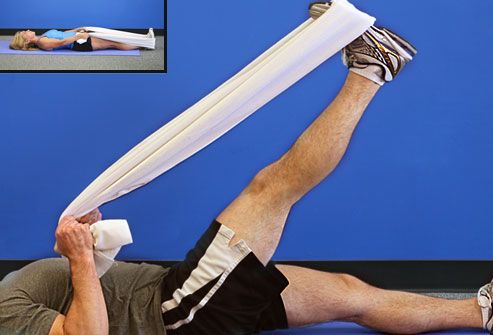
Stretching keeps you flexible and improves your range of motion, or how far you can move your joints in certain directions. It also helps you lower your odds of pain and injuries.
Always warm up with a 5-minute walk first. Lie down when you’re ready to stretch your hamstring. Loop a bed sheet around your right foot. Use the sheet to help pull the straight leg up. Hold for 20 seconds, then lower the leg. Repeat twice. Then, switch legs.
Calf Stretch
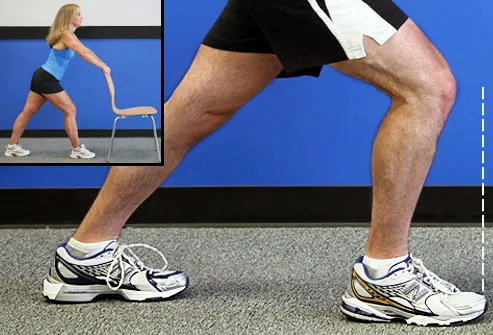
Hold onto a chair for balance. Bend your right leg. Step back with your left leg, and slowly straighten it behind you. Press your left heel toward the floor. You should feel the stretch in the calf of your back leg. Hold for 20 seconds. Repeat twice, then switch legs.
For more of a stretch, lean forward and bend the right knee deeper — but don’t let it go past your toes.
Arthritis And Exercise Guidelines
Straight Leg Raise
Build muscle strength to help support weak joints.
Lie on the floor, upper body supported by your elbows. Bend your left knee, foot on the floor. Keep the right leg straight, toes pointed up. Tighten your thigh muscles and raise your right leg.
Pause, as shown, for 3 seconds. Keep your thigh muscles tight and slowly lower your leg to the ground. Touch and raise again. Do two sets of 10 repetitions. Switch legs after each set.
Step Ups
Do this to strengthen your legs for climbing steps.
Stand in front of stairs, and hold onto the banister for balance. Then place your left foot on a step. Tighten your left thigh muscle and step up, touching your right foot onto the step. Keep your muscles tight as you slowly lower your right foot. Touch the floor and lift again. Do two sets of 10 repetitions. Switch legs after each set.
Low-Impact Activities
Other exercises that are easy on the knees include biking, swimming, and water aerobics. Water exercise takes weight off painful joints. Many community and hospital wellness centers, gyms, and pools offer classes for people with arthritis.
Being active may also help you lose weight, which takes pressure off your joints.
For favorite activities, like golf, ask your doctor or physical therapist how to safely make painful moves hurt less.
Ways to Lower Your Chances of Osteoarthritis
Keep to a Healthy Weight
Extra pounds stress your joints and can wear away the soft cartilage at the ends of your bones more easily. Drop just 10 pounds, and you could take as much as 40 pounds of force off your knees. That’s a lot less wear and tear, especially over time. And extra fat on your body may release chemicals that can inflame joints, which also can lead to osteoarthritis. Talk to your doctor about the right weight range for your size.
Strength Training
This could be pushups and pullups or weightlifting. You strengthen muscles to better support your joints and help stop or slow the breakdown of cartilage. Stronger muscles also help prevent sudden injury to a vulnerable joint, another cause of osteoarthritis. It’s particularly important to build and maintain muscle around joints that bear weight like your knees, hips, and ankles.
Eat Fatty Fish
Think salmon, tuna, halibut, cod, mackerel, and herring. These types of fish are rich in omega-3 fatty acids, which help lessen inflammation that can be hard on your joints. Even though scientists typically think of rheumatoid arthritis as the inflammatory form of the disease, inflammation may also cause some types of osteoarthritis or make them worse.
Warm Up
Before you do something physical, whether it’s an all-out game of flag football or just a quiet round of golf, it’s a good idea to loosen up your muscles, ligaments, tendons, and joints, to make them harder to injure. Walk, run in place, or do some jumping jacks. All it takes is 5-10 minutes — a small price to pay to avoid hurting yourself.
Choose Your Shoes Carefully
Women make up two-thirds of people with knee osteoarthritis. High heels, which put more stress on the front and back of the knee, are part of the problem. Even a low inch-and-a-half heel can increase the pressure. Light, low-heeled, flexible shoes seem to be the best to help prevent osteoarthritis. Take time to get used to them.
Arthritis – Benefits Of Exercise
Regular exercise has many health benefits for people with arthritis. Exercise can:
- aid joint lubrication and nourishment
- ease your joint pain and stiffness
- improve flexibility
- build muscular strength
- improve your balance
- help you sleep better
- improve posture
- improve or maintain the density of your bones
- improve overall health and fitness
- lower stress levels
- improve your mood
- help you maintain a healthy body weight.
Arthritis And Exercise Guidelines
BOTTOMLINE
- Exercise can help reduce the symptoms of arthritis.
- Gentle exercises such as warm water exercise and tai chi can be particularly helpful for people with arthritis.
- Plan your exercise program in consultation with your doctor and your physiotherapist, exercise physiologist or fitness professional.
